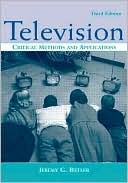Category Books
- Fiction Books & Literature
- Graphic Novels
- Horror
- Mystery & Crime
- Poetry
- Romance Books
- Science Fiction & Fantasy
- Thrillers
- Westerns
- Ages 0-2
- Ages 3-5
- Ages 6-8
- Ages 9-12
- Teens
- Children's Books
- African Americans
- Antiques & Collectibles
- Art, Architecture & Photography
- Bibles & Bible Studies
- Biography
- Business Books
- Christianity
- Computer Books & Technology Books
- Cookbooks, Food & Wine
- Crafts & Hobbies Books
- Education & Teaching
- Engineering
- Entertainment
- Foreign Languages
- Game Books
- Gay & Lesbian
- Health Books, Diet & Fitness Books
- History
- Home & Garden
- Humor Books
- Judaism & Judaica
- Law
- Medical Books
- New Age & Spirituality
- Nonfiction
- Parenting & Family
- Pets
- Philosophy
- Political Books & Current Events Books
- Psychology & Psychotherapy
- Reference
- Religion Books
- Science & Nature
- Self Improvement
- Sex & Relationships
- Social Sciences
- Sports & Adventure
- Study Guides & Test Prep
- Travel
- True Crime
- Weddings
- Women's Studies
Television: Critical Methods and Applications » (3rd Edition)

Authors: Jeremy G. Butler
ISBN-13: 9780805854152, ISBN-10: 0805854150
Format: Paperback
Publisher: Taylor & Francis, Inc.
Date Published: September 2006
Edition: 3rd Edition
Author Biography: Jeremy G. Butler
Jeremy G. Butler is the author of the forthcoming book, Television Style (Routledge, November 2009).
Book Synopsis
Written in clear and lively prose, Television explains how television programs and commercials are made, and how they function as producers of meaning. Author Jeremy Butler demonstrates the ways in which cinematography and videography, acting, lighting, set design, editing, and sound combine to produce meanings that viewers take away from their television experience. This popular text teaches students to read between the lines, encouraging them to incorporate critical thinking into their own television viewing.
Television provides essential critical and historical context, lucidly explaining how different critical methods have been applied to the medium, such as genre study, ideological criticism, and cultural studies. Hundreds of illustrations from television programs introduce the reader to the varied ways in which television goes about telling stories, presenting news, and selling products, and a companion Web site (www.TVcrit.com) supplements the text with color frame grabs and illustrative video clips.
Highlights of this third edition include:
•new segments on “reality” television and television animation since 1990;
•an updated and expanded chapter surveying critical methods applied to television;
•a wide variety of examples, including recent television shows; and
•a supplemental DVD to provide teachers with video examples and exercises.
With its distinctive approach to examining television, this text is appropriate for courses in television studies, media criticism, and general critical studies. In addition, Television will encourage critical thinking in television production courses.
Table of Contents
Contents: Preface. Part I: Understanding Television’s Structures and Systems. Television’s Ebb and Flow in the Postnetwork Era. Narrative Structure: Television Stories. Building Narrative: Character, Actor, Star. Beyond and Beside Narrative Structure. Part II: Television’s Style: Image and Sound. Style and Setting: Mise-en-Scene. Style and the Camera: Videography and Cinematography. Style and Editing. Style and Sound. A History of Television Style—Gary A. Copeland. Music Television—Blaine Allan. Animated Television: The Narrative Cartoon. The Television Commercial. Television Studies: Alternatives to Empirical Approaches. Appendix.
Subjects
 Television
Television  Television - General & Miscellaneous
Television - General & MiscellaneousEntertainment
 Television
Television  Television Broadcasting - General & Miscellaneous
Television Broadcasting - General & MiscellaneousEntertainment
 Television
Television  Television Broadcasting - Social Aspects
Television Broadcasting - Social AspectsNonfiction
 Philosophy
Philosophy  Linguistics & Semiotics
Linguistics & SemioticsPhilosophy
 Linguistics & Semiotics
Linguistics & Semiotics  Semiotics
SemioticsNonfiction
 Entertainment
Entertainment  Television
Television
